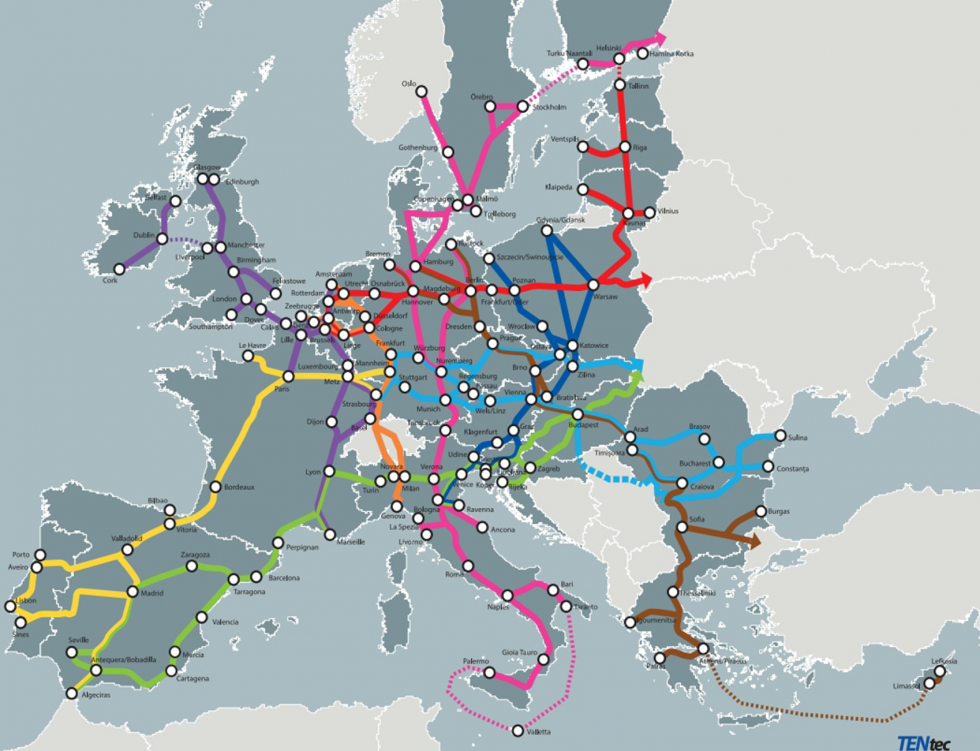Connecting Europe Facility – transport
Regulation (EU) No 1315/2013 of the European Parliament and of the Council on Union guidelines for the development of the trans-European transport network lays down the general objectives and special technical requirements for the TEN-T network. Annexes comprise indicative maps of networks (roads, railways, waterways) and lists of core networks, maritime and inland ports, airports and multimodal terminals. The trans-European network comprises a dual-layer structure consisting of the comprehensive network and the core network.
The objectives of the TEN-T policy are:
- the completion of the core network by 2030, built on nine multimodal corridors, and
- the completion of the comprehensive network by 2050 to facilitate access to all regions of Europe.
CEF transport focuses on cross-border projects and projects aimed at removing bottlenecks or bridging missing links in various sections of the core network and on links with the comprehensive network as well as horizontal priorities, such as the development of traffic management systems. The programme also supports transport system innovations aimed at improving infrastructure use, reducing the environmental impact of transport and increasing energy efficiency and safety.
The total CEF transport budget for the 2014–2020 period is EUR 24.05 billion, of which EUR 22.4 billion in the form of grants.A total of EUR 11.3 billion is earmarked exclusively for countries eligible for financing from the Cohesion Fund, Slovenia being one of them ("the Cohesion Envelope"). In comparison with the last financing period (2007–2013), the budget for transport infrastructure has substantially increased by approximately EUR 18 billion.
Studies on all transport modes are eligible for 50% of co-funding, while 20% of co-funding has been earmarked for the deployment of traffic management systems and the deployment of new technologies and innovations. The funding rates for construction projects vary, with maritime and railway transport receiving the highest (up to 40%). Projects carried out under the Cohesion Envelope are eligible for 85% of co-funding.


